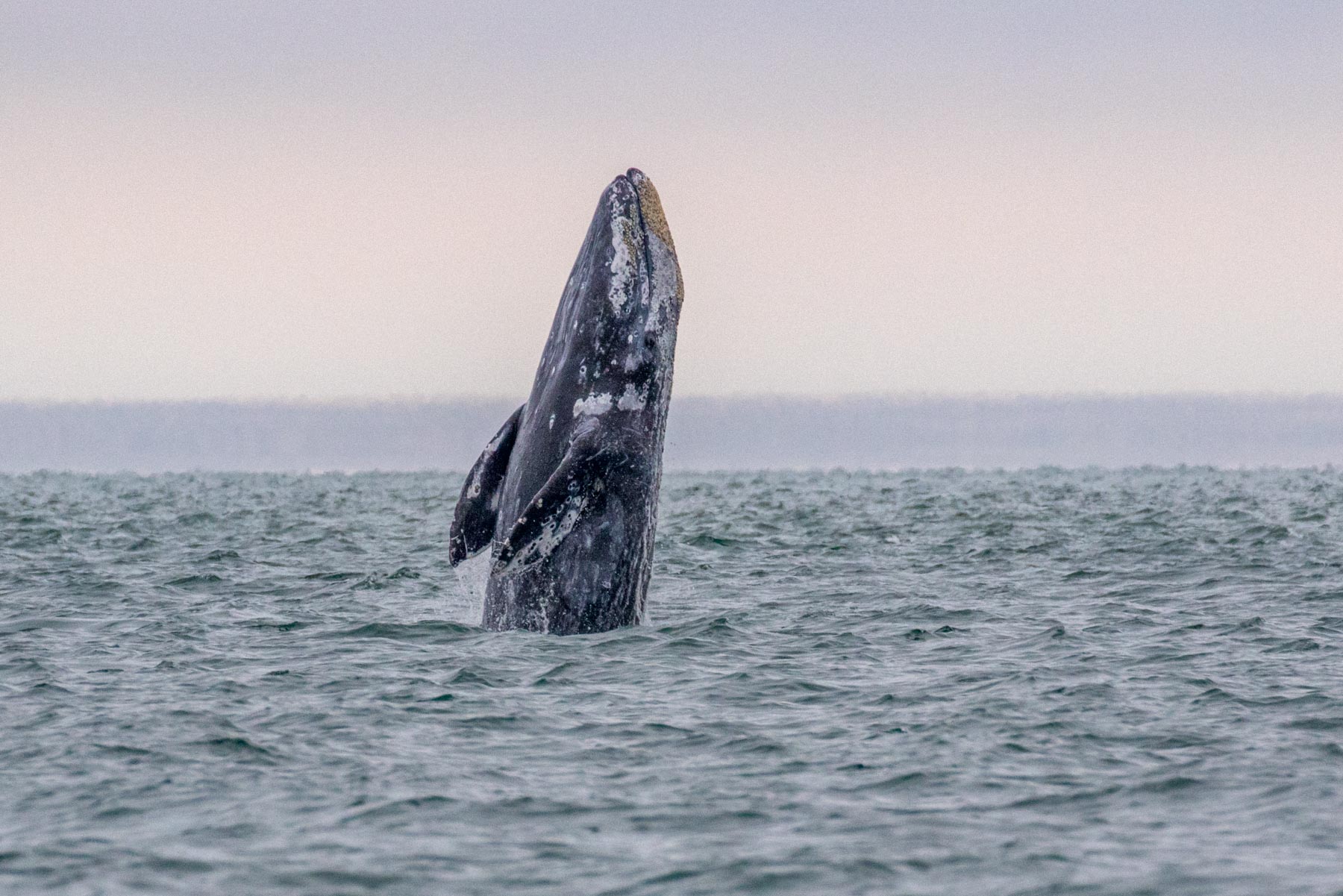
Trying to figure out where to go whale watching at the Oregon coast? You’re in the right place. As someone that grew up in Oregon, I’ve lost count of the number of times my mom would take us to the coast for whale watching.
The impetus for this Oregon Coast Whale Watching Guide was my assumption that most Oregonians had similar experiences. But, I was surprised to learn that a few of my coworkers have never embarked on the same adventure, alas — I took matters into my own hands and created this guide to share with first-timers. Let’s dive in!
Types of Whales You’ll See
People from all over the country travel to the soaring cliffs of Oregon’s coast for whale watching opportunities. As the whales travel up and down the western shoreline (on their twice per year migrations), you can easily observe them from the shore as they quietly roam the waves searching for food and raising their young.
You’ll mostly be seeing Pacific gray whales, but other species have been spotted close to shore. Orcas (the notorious “killer whales” of Hollywood fame) are usually further north yet sometimes swim into warmer southern waters off of Oregon to hunt.
These waters also tend to attract the occasional Humpback and Blue whale, though they are much more rare and prefer to feed in deeper water. There’s so many wonderful places to spend some time scanning the horizon for the characteristic spouts of the whales as they pass the shore.
But first, I want to set you up for success. So let’s cover some helpful things to know about whale watching in Oregon.

When to See Whales at the Oregon Coast
Spring typically has the highest migration numbers because whales come in a mile off shore to feed. From late-March to early-June somewhere around 20,000 Pacific grey whales pass through Oregon’s coastal waters heading north.
From December through January, whale sightings begin to increase again as they travel south en route to Baja, Mexico. Although you’ll have to brave the blustery cold of the coastline to see the whales, winter also means less crowds and a good excuse to gather the family around a warm bowl of fresh clam chowder at one of the many local restaurants.
Whale Watching Week (December & March): Every year, like clockwork, whale watching week kicks off at the coast (exact dates vary). During the week, volunteers are stationed at 20 of the best spots to see whales at the Oregon coast. The helpful volunteers share knowledge about the whales and offer education resources, it’s a great event for curious kids to attend!
Where to See Whales at the Oregon Coast
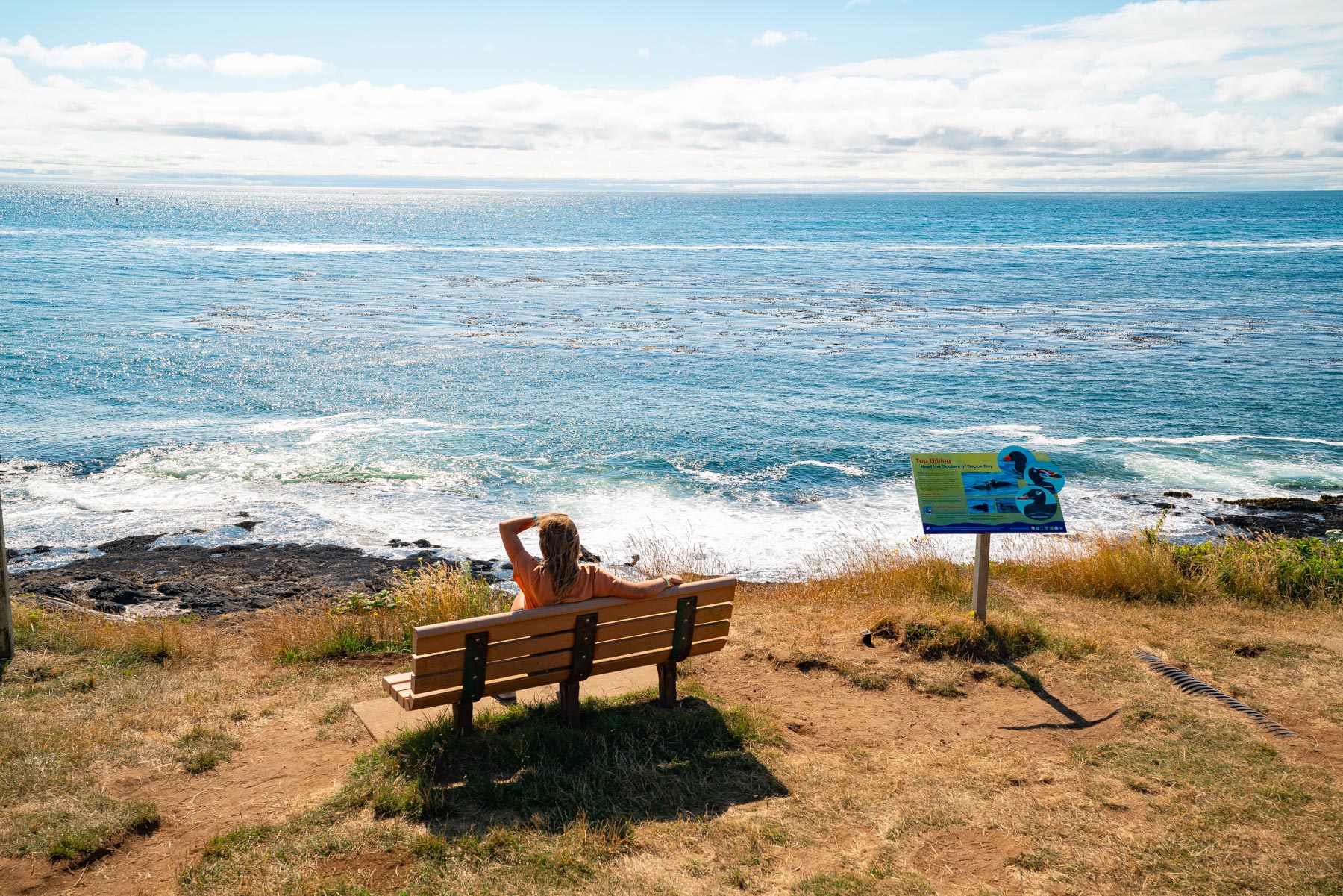
Depoe Bay
Home to the smallest harbor in the world, Depoe Bay is the unofficial epicenter for whale watching in Oregon and the best choice for seeing whales year round.
The reason? Depoe Bay harbors a small population of roughly 200 gray whales who don’t migrate at all. Puzzling marine biologists, these whales have chosen to make their home in the shallow waters off the bay, where they remain year round.
With so many whales congregated in a relatively small area, the chance of spotting them is high. You’re virtually guaranteed to see at least one wandering whale as it scopes the sandy beach bottom for crabs, krill, and shrimp.
Depoe Bay has fully embraced whale palooza, catering to eager visitors with a smorgasbord of shops, visitor centers, boat tour options and viewing platforms. Speaking of, the Whale Watching Center mentioned is a great place to learn about how to see whales at the Oregon coast.
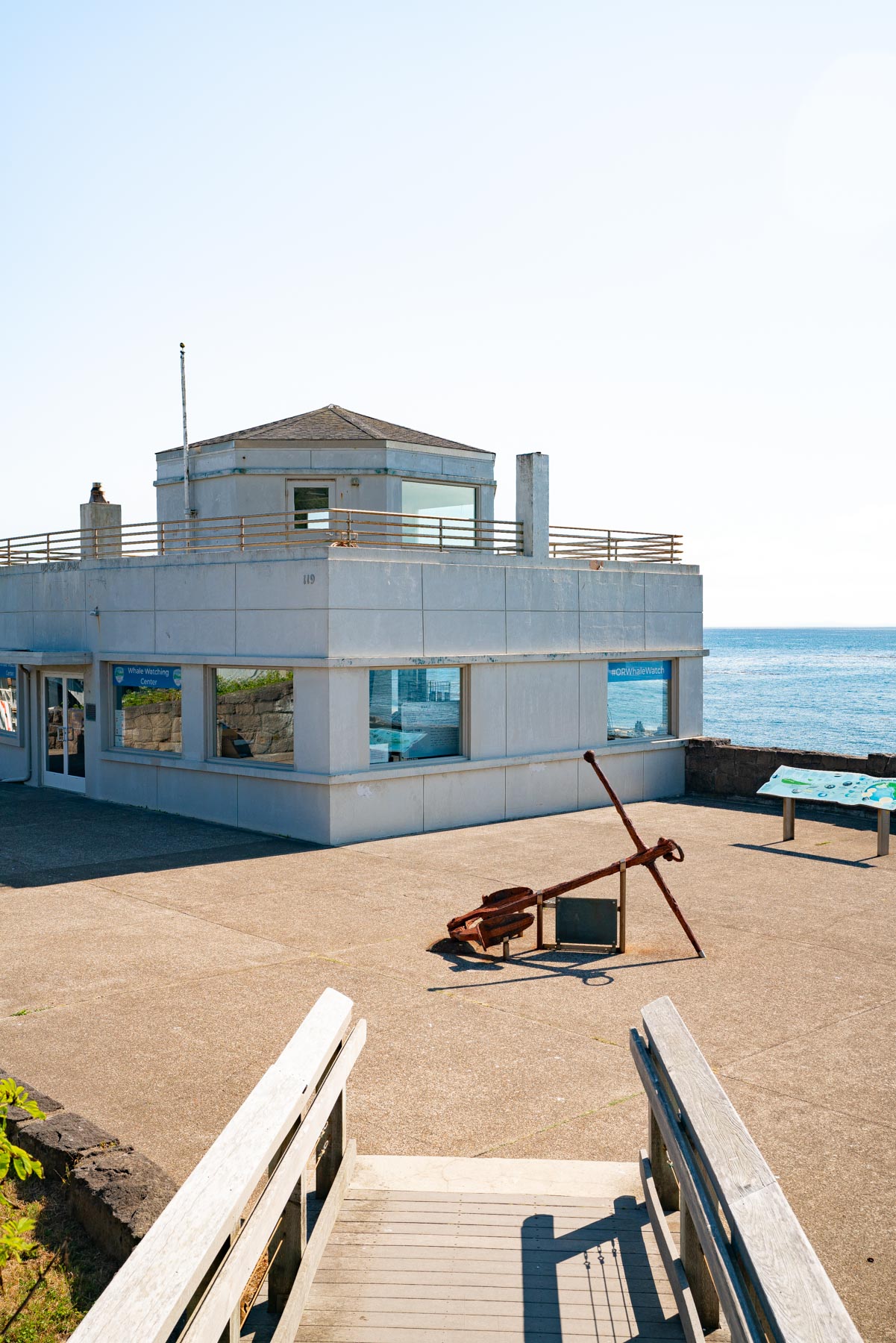
Good to Know: The Depoe Bay Whale Watching Center
The Whale Watching Center in Depoe Bay has knowledgeable staff and volunteers to fill you in on fun facts and offer binoculars to use during your visit. Booking a whale watching tour is another way to whale watch–if you’ve got your sea legs, that is. There’s a handful of companies who provide short excursions into the water to view whales and other marine life up close.
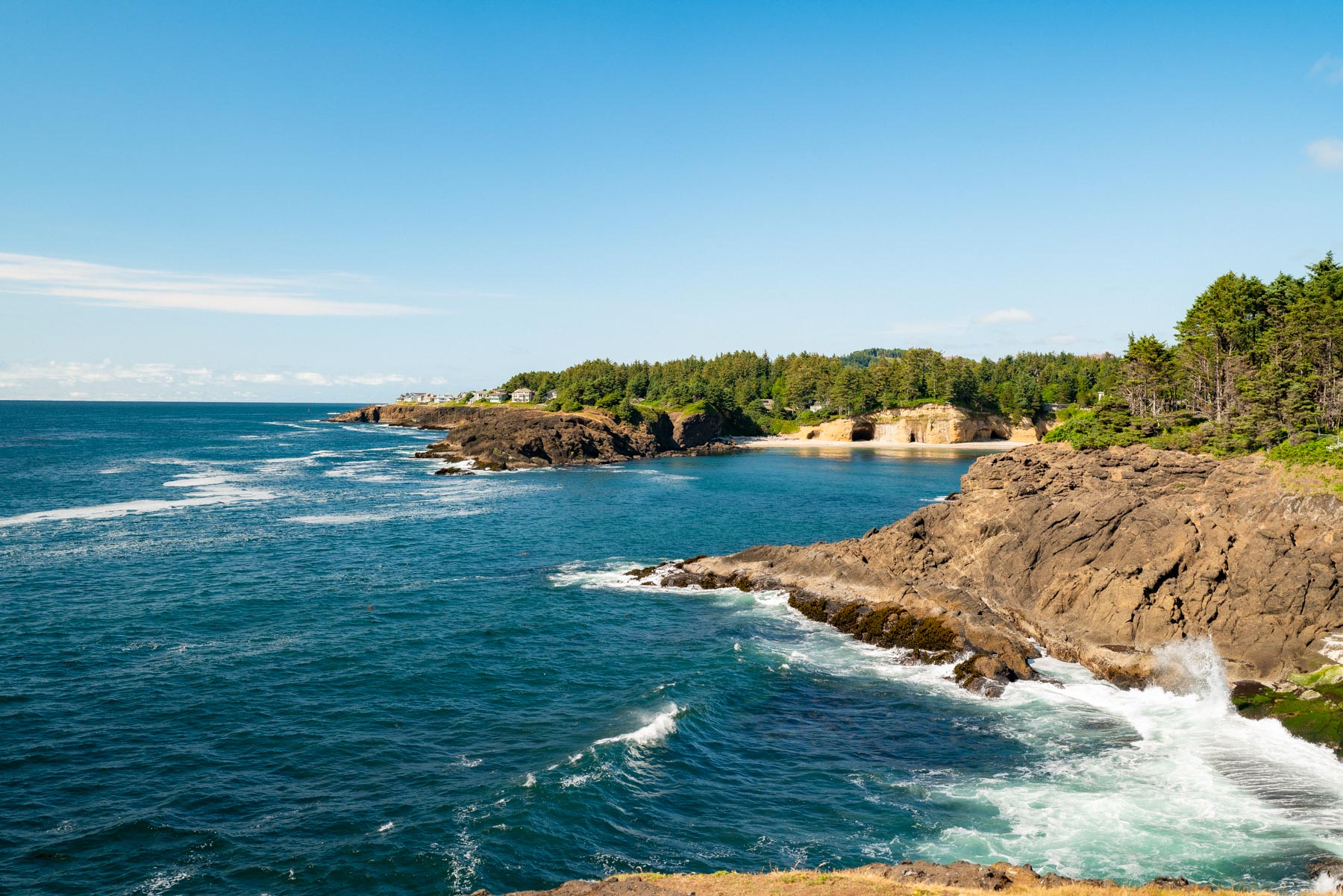
Cape Foulweather
Although foul weather certainly makes an appearance here at times, this area just south of Depoe Bay is only foul by name. The cape was actually named by Captain Cook when his ship encountered a storm upon discovering Oregon in the 18th century.
Dire name aside, this scenic viewpoint is spectacular. Cape Foulweather soars above the ocean, providing an eagle-eye view of what feels like the entire Oregon coast. Gray whales are known to frequent the area, flashing their fabulous flukes as they deep dive into the sea.
Take an occasional break from whale watching to admire the spruce-lined cliffs to the north as they gently sweep down into the sea. Waves crash and spray seafoam over low-lying rocks that are a safe harbor for tidal marine life like sea stars, crabs and anemones.

Cape Perpetua
Are you seeing a theme here? The dramatic capes of Oregon’s coastline provide the perfect overlooks for whale spouts among the waves and Cape Perpetua is no exception.
Nestled between the rugged sea shore and lush temperate rainforest , this state park gives visitors the best of both worlds. Explore the overgrown trails of Siuslaw National Forest or consider signing up for a ranger-led tour of the trails to learn more about this diverse ecosystem.
Rising a dizzying 800 feet above sea level, Cape Perpetua is the highest viewpoint accessible by car along the coast. What better place to head to spend a day watching whales at the Oregon coast?
Once you’ve had your fill of whale watching, roam around the rest of the 2,700 acre area and explore tons of interesting natural formations. Devil’s Punch Bowl (a necessary addition to any proper Oregon coast bucket list) is a cool rock close to shore that waves flood into, creating a “churning” effect you can see from a pullout along the highway.

Boiler Bay
So, what’s with the name? Well, the explanation for this one is quite simple. In 1910, a ship sank and disintegrated into the sea, the only thing that remains is the boiler (which can be viewed at low tide).
Offering a large parking area and plenty of flush toilets, this wayside is a convenient place to rest — even if whale watching at the Oregon coast is nothing more than an afterthought. That being said, you’re likely to see a few in the area.
You’ll find the usual suspects: gray whales, but packs of orcas are seen here a few times each year. Boiler Bay also happens to be an incredible place to spot sea birds like jaegers, oystercatchers and loons.
Sweeping views of the curved coastline are totally unobstructed, allowing you to take in the deep blue ocean as far as the eye can see. Bring your binoculars to take in the wildlife and panoramic views before continuing further along while the Oregon coast for whale watching.
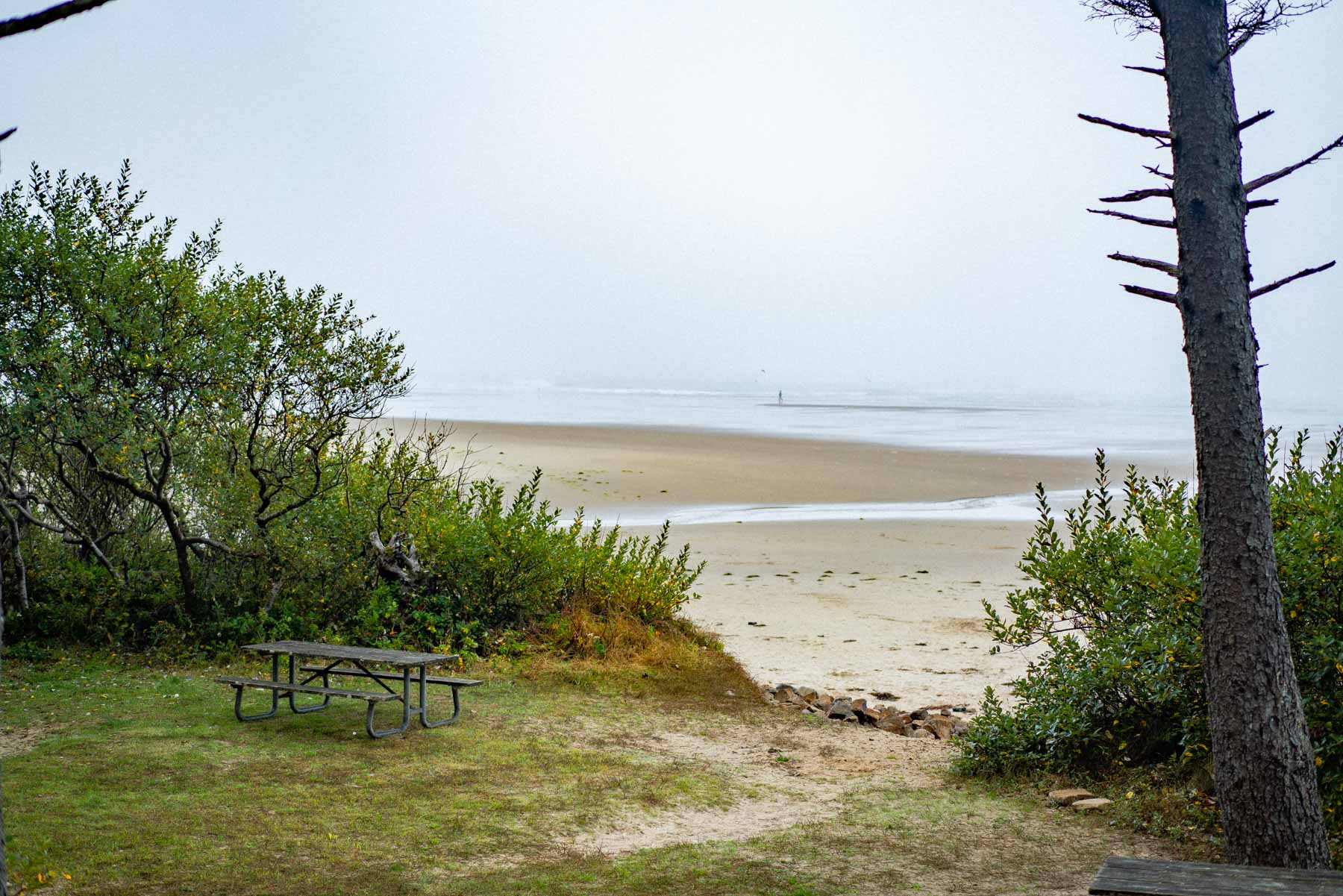
Cape Lookout
From a vantage point on a sand spit slicing into the ocean, Cape Lookout State Park is a popular place to visit for recreation opportunities of all sorts.
Swing by for the day or set up overnight at a campsite (Cape Lookout has one of the best campgrounds at the Oregon coast) to serve as home base while you’re visiting the coast. There’s 5 miles of easy hiking trails that wind around the headlands, providing countless spots to peer down into the rolling waves to see whales along the Oregon coast.
Hike through Sitka spruce and hemlock as you make your way out to the point of Cape Lookout, where the most stunning views await. On a clear day, look north to see Tillamook Head looming 40 miles away, and south to find Cape Foulweather (also about 40 miles away).
Local’s Tip: If you’re up for a drive, consider puttering along the Three Capes Scenic Route which takes you from Tillamook to Pacific City. On this route you’ll be able to see Cape Meares, Cape Kiwanda, and Cape Lookout, each just as awe-inspiring as the other.
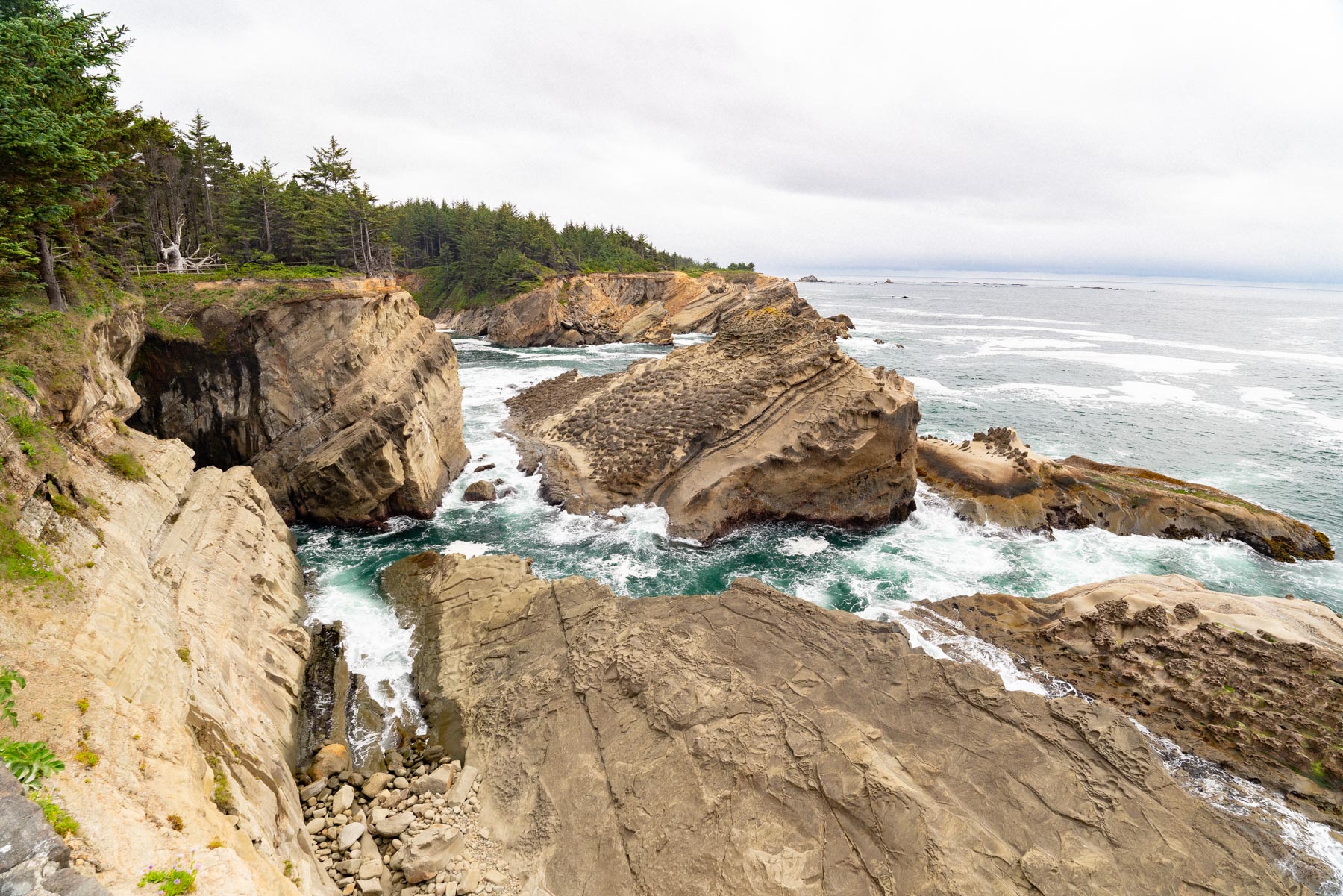
Cape Arago State Park
Last but not least, the southernmost cape on our list: Cape Arago State Park. This one is a personal staple whenever I’m visiting the Oregon coast for whale watching.
Driving down the Cape Arago highway you’ll notice a ton of pullouts where you can park and scope out the ocean for signs of breaching whales. Located near Coos Bay, this is a great stop if you’re already exploring the incredible sand dunes nearby.
Also along the Cape Arago highway is the Cape Arago Lighthouse, a defunct structure that isn’t open to the public, but is still a neat little feature of Oregon’s lighthouse-riddled coastline.
I’d argue that the shore has the best views of the whales. The South Cove Trail takes you down to crystal clear tide pools studded with chunky sea stars and crusty barnacles. Stay here to play in the warm sand, or continue exploring other trails in the area.
You Might Enjoy Reading: 10 EPIC Spots for Wildlife at the Oregon Coast (Seals & Sea Lions, Oh My!)
How to Find Whales at the Oregon Coast
The great thing about whale watching is that anybody can participate. Many Of the best viewing opportunities take place right outside of your car overlooking the ocean, so even visitors with small children or mobility concerns can join in on the fun.
Whale watching also takes zero special knowledge or equipment, which is an understandable barrier to entry for a lot of other outdoor experiences. For the casual family day trip to the coast (and even for seasoned explorers), seeing a whale gliding through the rolling waves is sure to be a memorable experience for all.
The best way to spot a whale is to scan the horizon (no binoculars needed) to see if you can catch the distinctive spot of water whales spew from their blowholes.
Oftentimes this display is followed by a glimpse of their tail (also called “flukes”) as the whales dive back down. Once you spot a spout or a fluke, grab a pair of any ol’ binoculars if you have them and try to zero in on the area. It’s likely you’ll be able to observe the whales spout and dive a few more times as they swim around the coastline.
Oregon Coast Whale Watching (Post Summary)
There’s no doubt that whales have a special place in our hearts. Although getting right up close to a whale in the wild is a tall order for the average person, these mystical creatures can often be observed in their natural habitat right from the sea shore. Specifically from Oregon’s shore, no less! Here’s a quick roundup of the best places to see whales at the Oregon coast.
- Depoe Bay
- Cape Foulweather
- Boiler Bay
- Cape Lookout
- Cape Perpetua
- Cape Arago State Park
Map of the best places to see whales at the Oregon coast
P.S. On a recent trip to Hawaii I saw the coolest scene! A mother whale was playing around with her new calf, see video below.


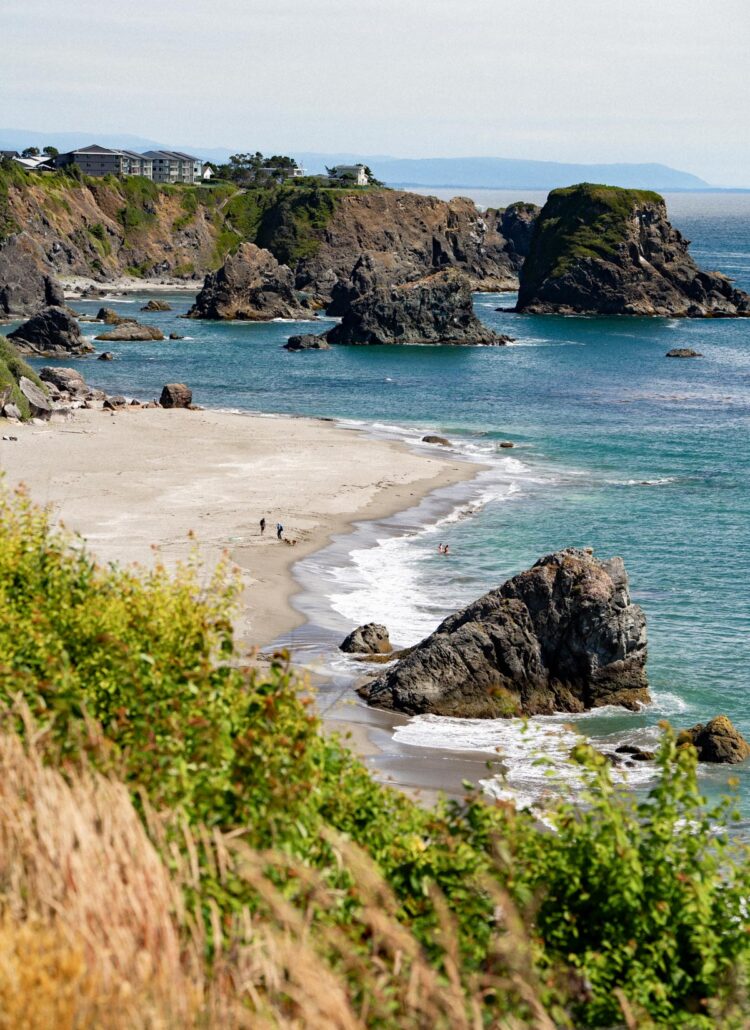
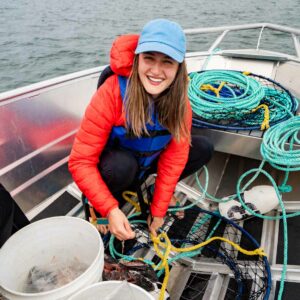
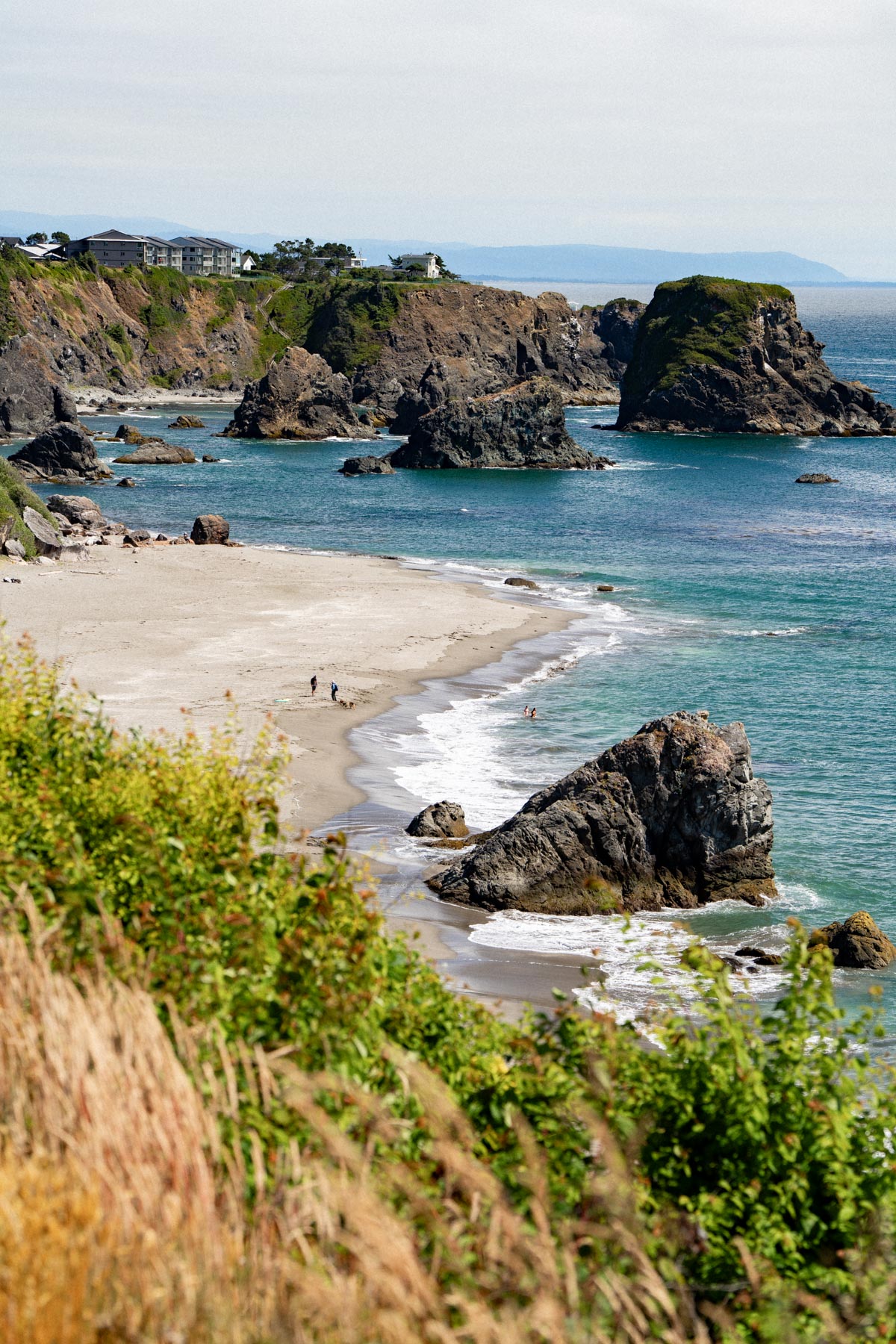
Leave a Reply